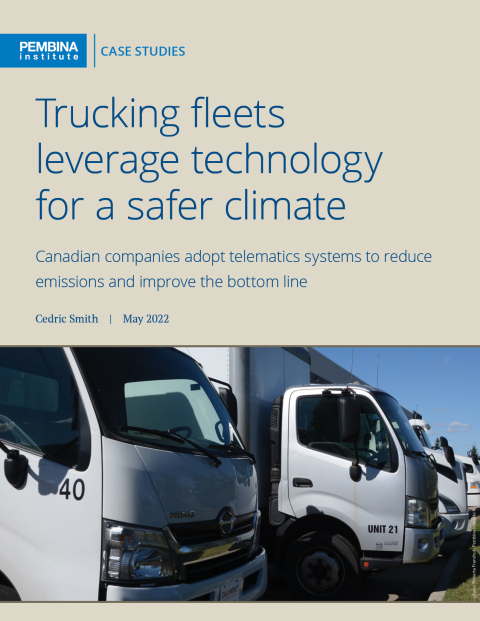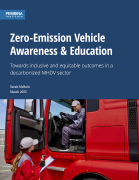Trucking is a vital part of Canada’s economy. Almost 90% of Canada’s freight shipments are hauled by truck, including minerals, fuel oils, crude petroleum, base metals and forest products. As Canada moves into its third year of the COVID-19 pandemic, trucking continues to ensure the smooth functioning of society and our economy — hauling essentials including facial tissues, toilet paper and hand sanitizer.
Trucking is also a significant contributor to Canada’s greenhouse gas emissions. Freight trucks currently account for nearly 35% of Canada’s transport sector emissions, and nearly 10% of Canada’s overall emissions. This share has grown since 1990, when these figures were at 16% and 3% respectively. For Canada to meet its target of net-zero greenhouse gas emissions as of 2050, it must address increasing emissions from the trucking sector.
Part of the solution is telematics systems. Telematics systems are one of a number of potential fuel-saving devices that can be used to reduce fuel use and emissions from traditional internal combustion engine heavy-duty vehicles. In early 2021, Pembina Institute research examined rates of adoption of fuel-saving devices in the on-road freight sector and provided case studies of emissions reduction solutions used by a selection of companies. The case studies provided in this document build on this research through providing examples of Canadian companies employing telematics devices to accomplish a number of goals, including emissions reductions and savings on fuel. Due to recent regulatory changes telematics systems are expected to become much more widely used in Canada, increasing the need for information on their current and potential use.
Telematics overview
Telematics devices are usually utilized for the monitoring of mobile assets. They can be installed in the cab of a truck’s tractor, or on a truck’s trailer, and track various operational metrics. Their foundational technologies are global positioning systems (GPS) and on-board diagnostics. As such, telematics systems combine telecommunications and information processing.
Three main types of data are generated or collected by telematics systems: data on vehicle systems; data on the driver; and other operational data:
- Vehicle systems data: The on-board diagnostics part of telematics systems can extract data on various vehicle systems, including the engine, the transmission and driveline, the emissions aftertreatment system and other body and chassis systems. This can provide important data and feedback on automobile diagnostics, repair needs and maintenance needs.
- Driver data: Telematics systems can generate data on the driver including speed, braking, acceleration, fuel economy, hours of service and idle time.
- Other operational data: Telematics systems can generate operations data including location tracking, navigation and dispatch and scheduling.
As Canada’s electronic logging device (ELD) mandate is increasingly enforced, telematics devices will become more commonplace in Canada’s freight sector. Telematics devices have a number of benefits, including driver safety and maintenance, but can also help reduce freight sector emissions. “What gets measured gets managed,” and telematics devices, through providing metrics relevant to fuel efficiency, can help fleets track, manage and ultimately reduce their contribution to a warming climate. Over time, as fleets transition to battery electric vehicles, telematics devices can increasingly provide useful information on the battery, in particular the state of charge.






